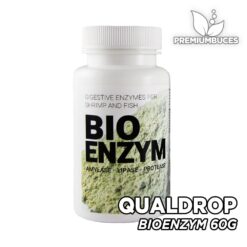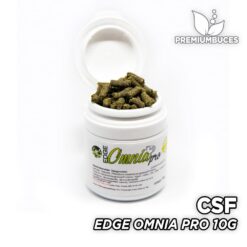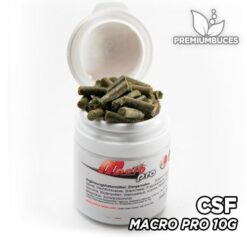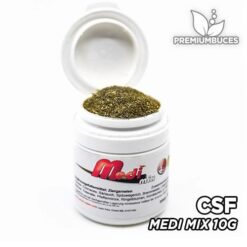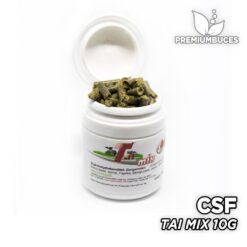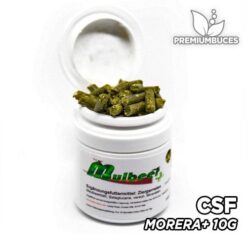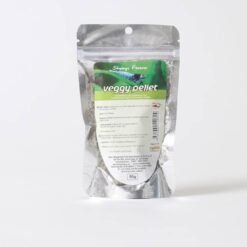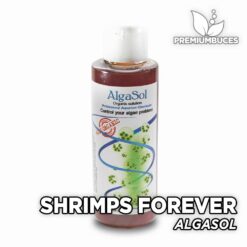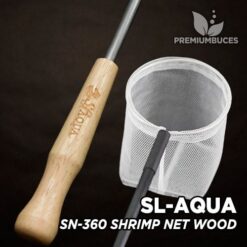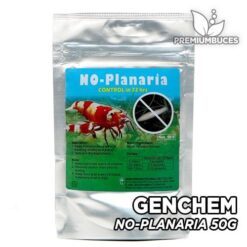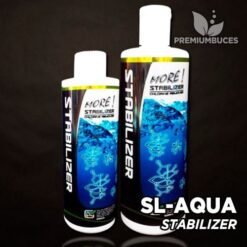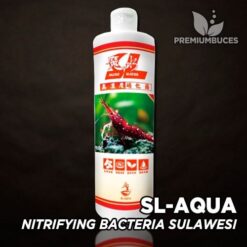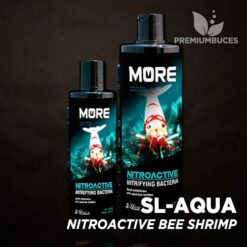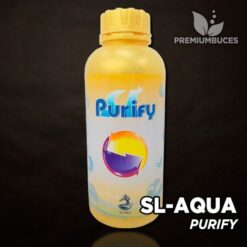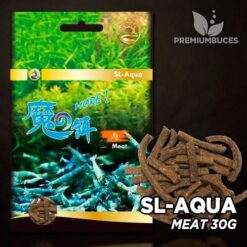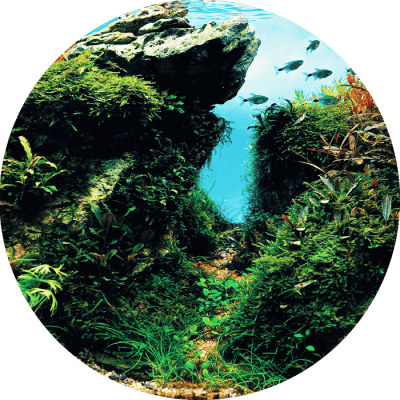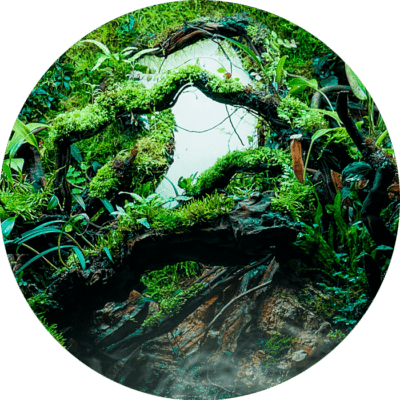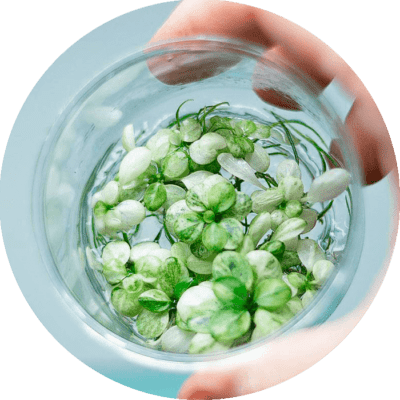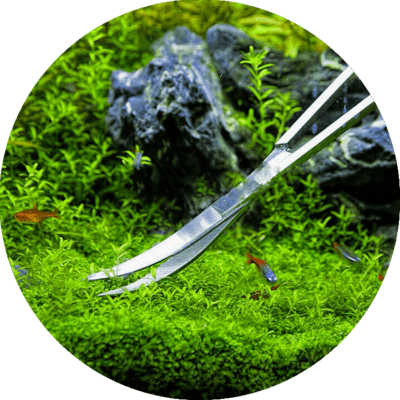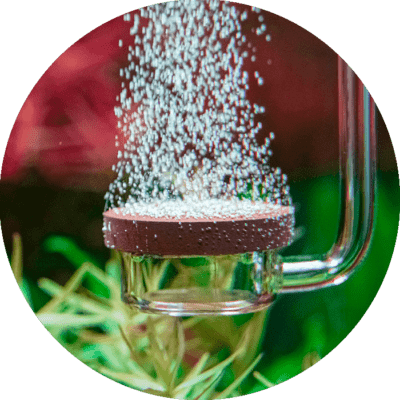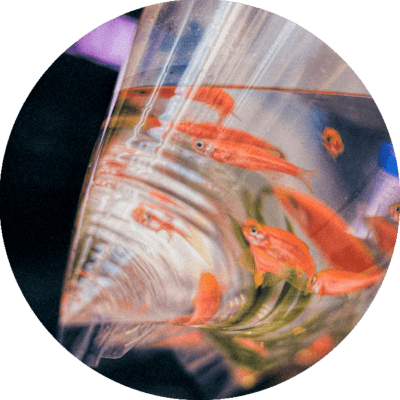An aquarium is an autonomous ecosystem for fish, invertebrates, and aquatic plants. Here, many different biological processes take place, which are intertwined and, in their entirety, represent an ecological cycle.
MAINTENANCE OF A PLANTED AQUARIUM
La organic material produced by animals that inhabit an aquarium first they are processed and degraded by bacteria and finally absorbed by aquarium plantsThis is called the nitrogen cycle. A diverse and balanced bacterial colony plays an important role in this process, as do larger living things, such as shrimp and snails. For a healthy and easy-to-care aquariumThese recyclers (degraders) are especially important. However, external help is needed to keep the ecological balance stable in the long term. Here the aquarium owner should have a regular maintenance routine. In this article we will talk in detail about the steps to follow to maintain a healthy aquarium with plants.
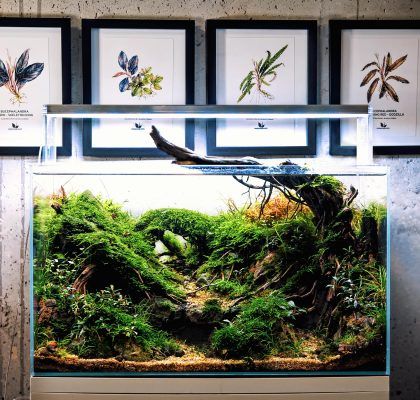
WEEKLY WATER CHANGES
Un water change It's not just for the purpose of adding fresh water, which most fish love, by the way, making them more active. Sometimes it even results in spawning or reproduction behavior. In addition to the introduction of fresh, clean water from a water change, contaminated water is removed and the concentration of undesirable substances in the aquarium water is reduced. We recommend a regular weekly water change with a half (50%) replacement of the water.
To replace the evaporated water from the aquarium, fill the remaining volume with demineralized osmosis water so as not to alter the hardness levels of the water, since the minerals do not evaporate from the aquarium and are concentrated in the water in the urn.
CLEANING OF ORGANIC MATTER
Many beginners have a totally wrong idea of what they have to do to carry out an aquarium cleaning like the following: The aquarium, including the substrate and filter, is regularly (monthly) thoroughly cleaned and rid of all dirt . The substrate is thoroughly aspirated with a siphon and all filter materials are replaced or cleaned in hot water. And this is not the way to maintain an aquarium!
In addition, mud and dirt play an important role in the aquarium ecosystemas it is home to a lot of bacteria that degrade polluting substances, like the filter material. If you clean all the “dirt” from the substrate and filter, you lose a lot of beneficial bacteria. Such a cleanup measure would be the equivalent of restarting an aquarium that would basically have to re-enter the cycling phase. As a result, toxic spikes of ammonium and nitrite could appear which as a result would end up killing the animals in your aquarium.
Therefore, by clean the filter and substrateYou should not be too rigorous and leave a bit of dirt inside the aquarium. As a rule, these measurements should only be carried out rarely, for example, if too much visible sludge has formed on the substrate (which on the other hand can be easily removed with a hose or siphon) or if the flow rate of the filter is seen considerably reduced by the accumulation of organic matter. If this is the case, you should gently squeeze the pre-filter materials (sponge or perlon) with the same aquarium water and then reuse them. This keeps the bacterial colony intact. A complete renewal of the filter material is not necessary. In general, these jobs are not the usual ones for maintenance, it is something that is done every many months.
By the way, the organic matter degradants such as snails and shrimp they can make maintenance much easier. They process large debris like food debris, carrion, and parts of dead plants, which can later be better processed by bacteria. All surfaces, where dirt usually collects, look much cleaner thanks to a invertebrate cleaning team.
CLEANING THE GLASSES
Nothing is as unpleasant as seeing the dirty glass of the aquarium blurring your eyes. On this, the regular window cleaning, both inside and outside, is a maintenance measure It is reasonable that it can be done once a week or longer if we fertilize correctly and we do not have excesses in our fertilizing routine that can produce algae. Many find this maintenance job very cumbersome. That is why this task can be greatly simplified with the right tools.
Above all, depending on the lighting power, planting and nutrient balance in the water, visible deposits are formed on the internal crystals, which generally consist of different types of algae. These can be brown diatoms, soft layers of green algae, or somewhat harder green dot algae. Here it is also very beneficial to control the algae with enough algivorous animals as a countermeasure, Clithon or Neritina snails, for example, are the most appropriate to clean these layers of algae, not only on the glass but also on the leaves and decoration of the aquarium. Prawns like Caridina Multidentata and prawns of the Neocaridina genus also graze tirelessly in these layers of algae. If there are enough animals to eat algae in the aquarium, aquarium cleaning efforts are greatly reduced. If the aquarium is properly maintained, the inner windows will only need to be cleaned very occasionally or never. In the event of an algae development, regular cleaning is recommended, once a week and combined with the necessary water changes.
There are several tools to clean the windows. Scrapers, with or without an extender, are suitable tools for these surfaces. Even green dot algae and limescale can be scraped away with aquarium scrapers with a sharp blade built into them. A cleaning sponge with a scouring pad for crystals or cleaning algae with a magnet They are ideal for removing biofilms from diatoms or softer green algae surfaces.
Even the exterior of the aquarium should be cleaned from time to time from splashes and fingerprints. This can be done with a standard supermarket glass cleaner.
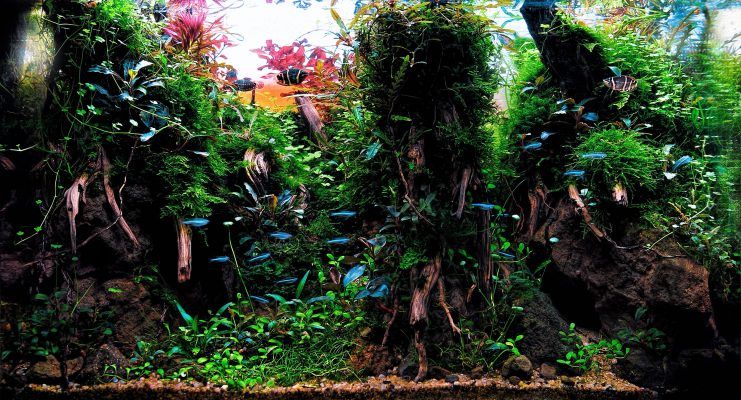
PRUNING OF AQUARIUM PLANTS
Especially when it is held a large number of fast-growing aquatic plants such as stem plants, which are in ideal circumstances to grow thanks to intense light and correct fertilization, regular pruning makes sense, for not let fast-growing plants take advantage, surpassing all others. Slower plants will be left over and may wilt. Also regular pruning for aesthetic reasons is important for the aquarium design stay in good shape.
To shape aquarium plants, the special scissors for Aquascaping are much more suitable than the ordinary scissors that we all have at home. There are models of scissors designed specifically for each possible type of pruning, for example, spring scissors for small aquariums or curved scissors are perfect for pruning upholstery plants.
After major pruning, quite a few will accumulate plant debris on the water surface. Eliminating them completely is an annoying but necessary job, to simplify this process we can use a salabrer or a surface skimmer.
FOOD FOR INVERTEBRATES AND FISH
Of course, the inhabitants of an aquarium like fish, snails and prawns need food. Animal feeding does not take long and feeding time is always an important factor, a proper feeding for each particular species it is vital. It is better not to over-feed animals and thus not over saturate the ecosystem within the aquarium. Some very healthy fasting days a week. Inside the aquarium there is always some food available, such as biofilms and microorganisms. Therefore, fish and other animals can survive a few days without throwing food without problems.
FERTILIZER OF PLANTS AQUATIC
The Aquascaping aquariums and planted aquariums they benefit from a good subscriber routine. Aquarium plants need a wide range of nutrients, including light, carbon through the addition of CO2, macro, and micronutrients. Sounds like more work than it really is. The lighting and CO2 system can be controlled automatically by a timer. Here, the aquarium owner does not need to do any kind of work except checking that the equipment works from time to time and making minor adjustments.
Fertilize the plants with liquid fertilizer It may be a little more work. Depending on the requirements of the aquarium plants and the aquarium equipment, a little subscriber routine It's enough. In a high requirements aquarium with many plants consuming nutrients, daily fertilization is recommended. This process only takes a few minutes and doing it regularly is very important.
HOW LONG DOES IT TAKE TO MAINTAIN AN AQUASCAPING AQUARIUM?
El daily subscriberChecking the aquarium from time to time and caring for the fish may take some time at first, the actual effort only takes a few minutes a day. You can estimate approximately 5 minutes for this.
You must take a little more time for the weekly water change. The best way to proceed here is to combine this water change with cleaning the windows if necessary, pruning the plants and siphoning off small traces of organic matter. Dirt, plant debris and suspended matter can be removed very easily while removing water from the aquarium.
This all depends on the size of the aquarium and the demand for cleaning and aesthetics that we want to haveThis more complex job may take longer. However, for a simple standard aquarium with some aquatic plants, generally about 30 minutes are enough.
Working in and out of the aquarium may seem tedious, but last but not least, as an aquarium owner, in the end you will be rewarded with a clean and attractive aquarium, which you can continue to enjoy once you have finished its maintenance.
Other articles of interest may be:
How to fertilize a Planted Aquarium - Aquascaping Guide
How to Eliminate Aquarium Algae - Causes and Most Effective Treatments
Rate this post:
In our online store you can buy Items for Gambario and receive them within 24 hours in Spain.
Buy Gambario Items


